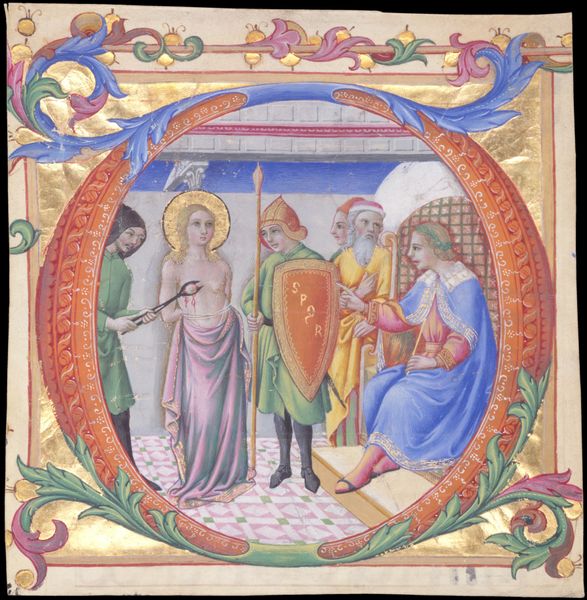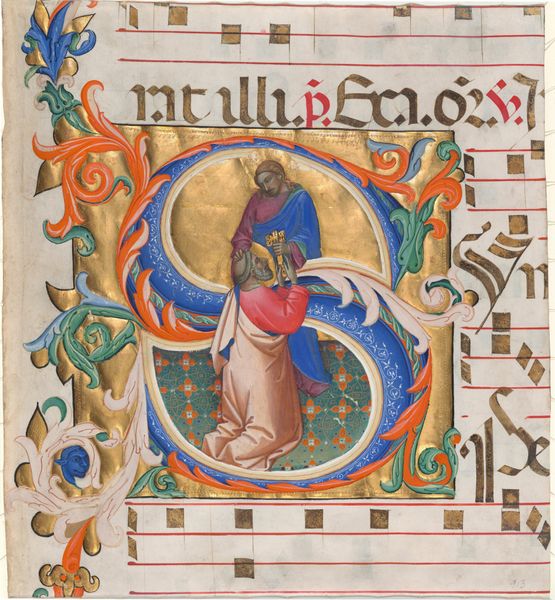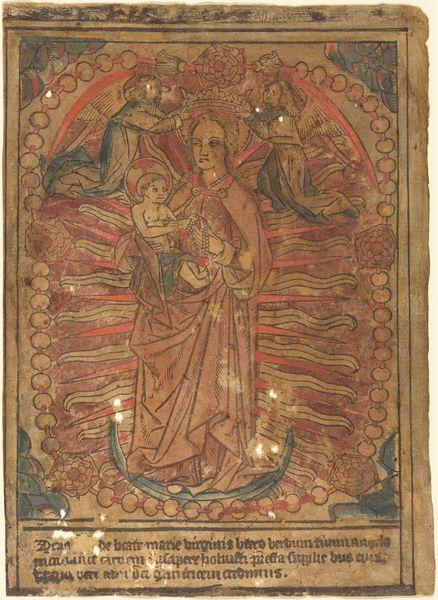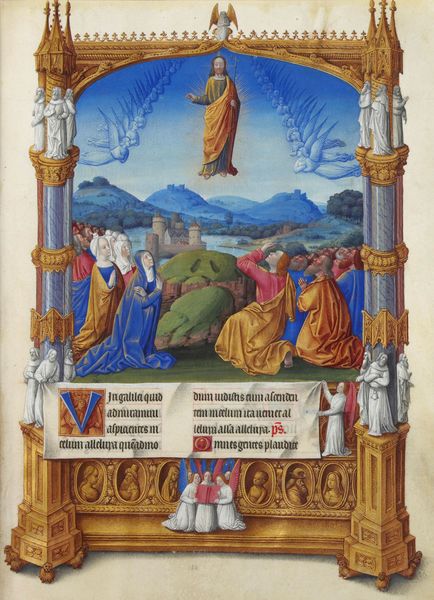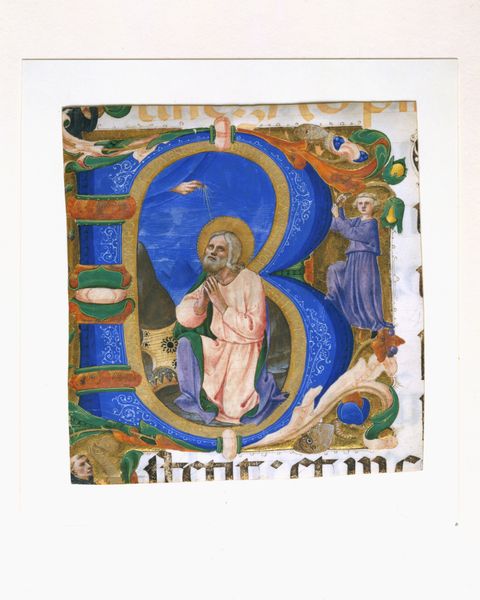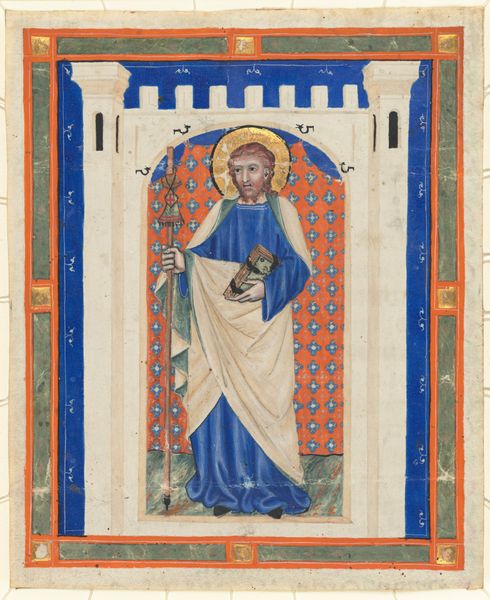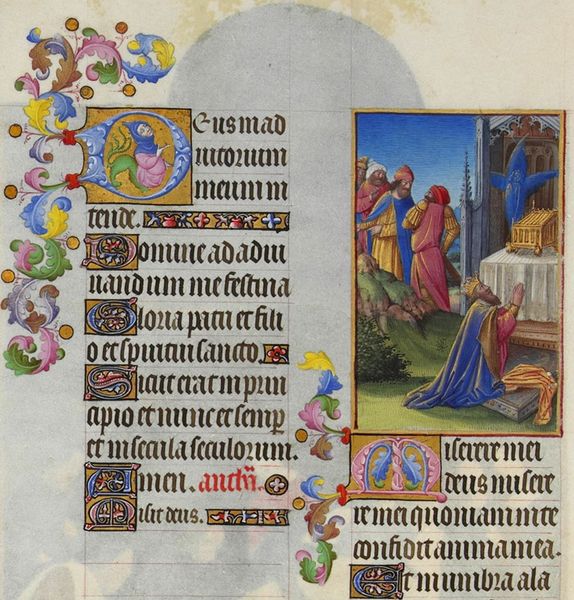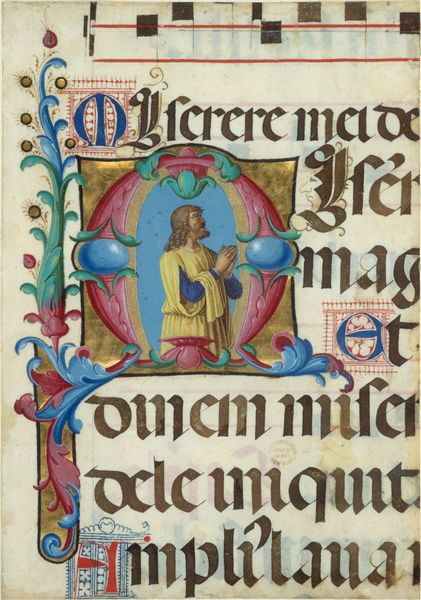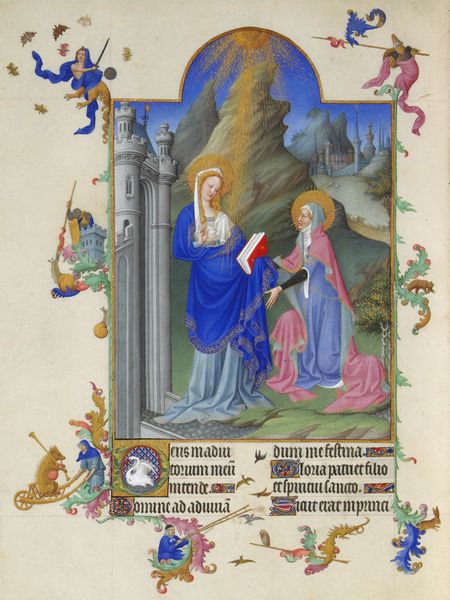
drawing, tempera
#
portrait
#
drawing
#
tempera
#
international-gothic
#
miniature
Dimensions: overall: 13.1 x 12.9 cm (5 3/16 x 5 1/16 in.)
Copyright: National Gallery of Art: CC0 1.0
Curator: This is "Praying Prophet" by Lorenzo Monaco, dating from around 1410 to 1413. It's tempera on parchment, exemplifying the International Gothic style. Editor: My first thought is how strikingly luminous it is, despite the somber subject. The gold leaf background gives it an otherworldly quality, contrasting with the figure’s grounded posture of supplication. Curator: Let's delve into that luminosity. It’s not merely decorative; the gold signifies the divine light. But consider the socio-economic implications – the cost of gold leaf, the specialized labor to apply it so meticulously. This wasn’t simply aesthetic choice; it communicated power and status, both of the patron and the church. Editor: Agreed, but visually, the patterning around the figure pulls the eye inward, towards his hands. The arrangement has an immediate spiritual and aesthetic affect. The meticulous lines forming those hands almost tremble with fervor, intensified by the contrasting decorative elements. It directs one to contemplation. Curator: And we can’t ignore the shift from manuscript illumination, a craft deeply embedded in monastic workshops, to something increasingly available, commissioned by wealthy individuals. What did this mean for the access to, and the perception of, religious imagery? Was this about personal devotion or conspicuous consumption? Editor: That’s fascinating. But regardless of the commission, Monaco's work masterfully captures the emotional tension inherent in prayer – that quiet, internal struggle. Notice the man's brow, subtly creased. It's remarkable for its time. Curator: Absolutely, and Monaco's shift from manuscript work also tells the story of a changing art world – from collective workshops to the emergence of named artists with individual styles. His own hand becomes a recognizable commodity, a signifier of quality and artistry. Editor: The intensity that we sense in his brow may have something to do with that transition too! Well, pondering the formal mastery alongside those larger economic factors certainly deepens our understanding. Curator: Indeed. It reminds us that even the most outwardly spiritual artworks are interwoven with very material realities and, more interestingly for me, the means and the context for their creation.
Comments
No comments
Be the first to comment and join the conversation on the ultimate creative platform.

